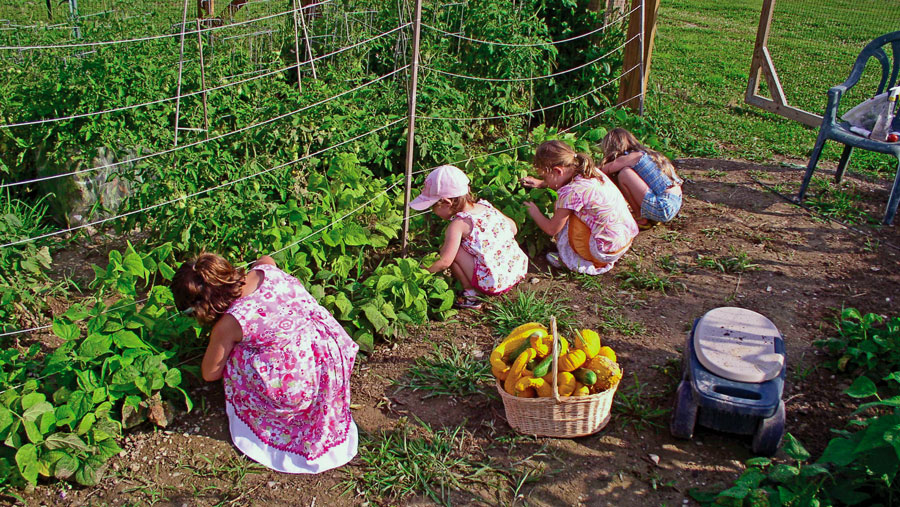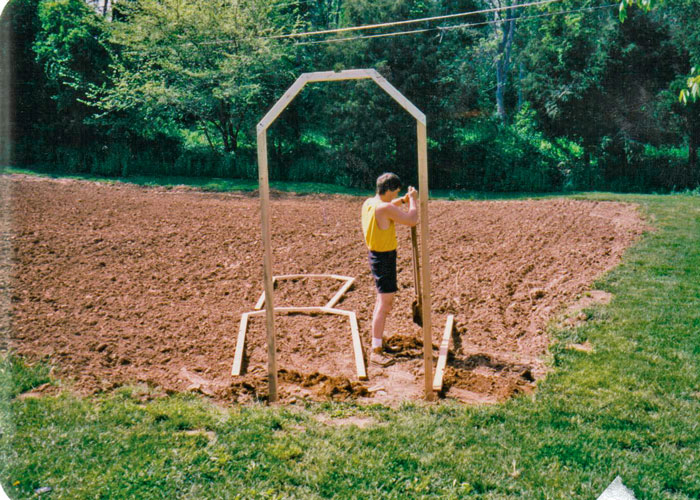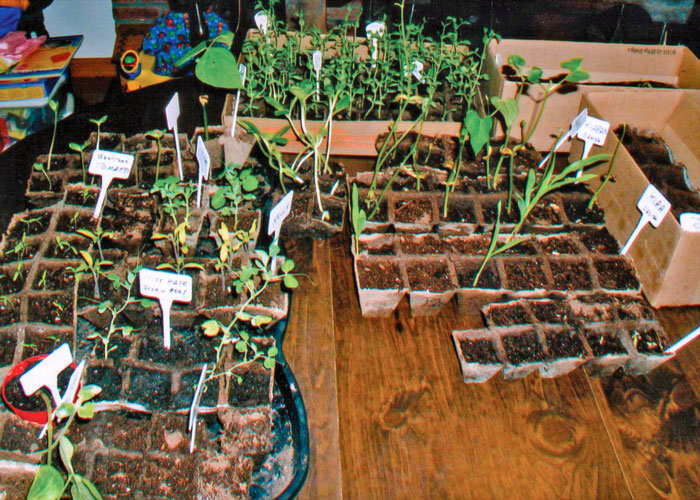In the 1940s, transportation shortages due to the war made it hard to move fruits and vegetables to market. So the government asked the American people to plant their own gardens. Can you imagine?
"I'm one person." "We're just one family." "This is one small business." "We're just one school." Thank
God our parents and grandparents didn't say that when the U.S. Government
called on citizens to make a difference during World War II.

Twenty million gardens were planted. Victory Gardens, they were called. They appeared in backyards, front yards, empty lots and rooftops. Neighborhoods formed cooperatives and pooled their energy and resources. Families were encouraged to preserve their harvests, and 315,000 pressure cookers for canning were sold in 1943, about 250,000 more than the previous year. Neighbors traded cucumbers for melons and exchanged canned pumpkin for canned tomato. There was a shared sense in the neighborhoods that "whatever happens, we're in this together". And a certain quality came to family life: time spent productively together, toward a common goal.
Today it seems we're in a war against old habits. Our excesses may be catching up with us. There's a blight spreading through the money tree in America. Is it dead or just dormant? Will it bloom this year or skip a year, or even more? We keep hearing that the housing bubble has burst and we're in a stock market correction. Maybe it is time for an agricultural correction.
So far, 21st century farming has relied on oil and gas. But the giant combines on the mega "farms" will have to re-tool or stop running. Food that is trucked and flown thousands of miles to get to us is becoming much more expensive, as it gets less fresh and looses nutritious value. Taste has been compromised for convenience and shelf life. Our remote supply may even eventually dwindle. It's time for local action. Grow a survival garden!
Plant vegetables, fruits, herbs and flowers. Enough for you, your family, and some extra for the local food pantry. Learn how to maximize your garden space, prepare your soil, keep the produce coming through three seasons, and preserve it to last through next winter.


You can start with a small garden plot, something you and your backyard can handle. Believe it or not, with the right planning and effort, a 20 x 20 plot--400 square feet--can yield 600 pounds of produce in six months, enough to feed a family of five for a year. That's over $1500 worth of food. And the monetary investment is small; you can keep it under $100 with a really sharp pencil. You'll need seeds, compost and a few garage sale tools. If deer are a problem, you'll need 8 foot fencing. You can use mesh deer fence and attach it to downed tree branches if you don't want to buy posts.
The vegetables best suited to a survival garden are beans, beets, carrots, peas, radishes, lettuce, spinach, Swiss chard, onions, cucumbers, summer squash, zucchini, leeks, turnips, cabbage, broccoli, peppers, cauliflower, tomatoes, and potatoes. Perennials such as asparagus and rhubarb that can come up yearly without re-planting should be included. Fruits such as strawberries, blueberries, blackberries, raspberries, and figs provide healthful and refreshing desserts. Plant root crops such as potatoes and winter squash, also onions and garlic, which you can store for months in a cool place.
Marigolds and nasturtiums are essential. Why are flowers needed in a survival garden? To attract beneficial insects, to lift your spirits, and to provide fresh cut cheer and beauty in your home to stand in for expensive decorations that may have to wait.
Plan to spend about an hour a day on a 400 square-foot plot for maximum productivity, yield and taste. It will take much less time if you make it a family activity, or get help from volunteers from the food pantry to which you plan to contribute.
Condition your ground. It is imperative to "grow the soil". Use compost and deep soil preparation. Roots cannot penetrate compacted dirt. It must be light and aerated. Spend as much time as necessary to prepare the soil well or the yields will be poor. Good preparation yields four times the productivity per unit of area.
Purchase open-pollinated organic seed. Open-pollinated seeds enable you to gather seeds from your harvest, and save them for the next year's planting. Use easy-to-save seeds like zucchini, cantaloupe, watermelon, corn, sunflowers for roasting, and peppers.
Don't plant all your seeds at once. Save some for succession planting. Crops like lettuce and spinach can be planted every two weeks so the crops come up at different intervals, ensuring fresh food for a longer time. Plant broccoli early for an early harvest, then plant a second crop in mid-July for a fall harvest. Plant on the south side for full sun, if possible.
Seeds and seedlings must stay moist. They may need to be watered more than once daily. Check them often. Try to water mature plants about 2 hours before sunset. Plants do a significant amount of their growing at night, and this gives them the water to do so.
Maximize your garden space by utilizing trellises, strings, cages and poles to grow vertically. Make tepees by tying three branches together and train vines to wind around them. Cucumbers and melons take up a lot of space as their vines travel across the garden if grown conventionally, but they are well suited to growing upwards with good support.
Use intensive gardening. This method saves space by planting closely in raised beds that warm up faster and are more airy, not compacted. Raised beds decrease the amount of sunlight reaching the ground, thereby minimizing both water requirements and weed growth.
Use companion planting. Native Americans understood this. They planted the "three sisters" together: squash to shade out weeds, corn, and beans to supply nitrogen to the corn.
Utilize your space wisely. Plant beets between the broccoli, radishes and lettuce between the tomatoes. Grow carrots in a 2 x 2 ft square rather than in rows. You can produce over 300 carrots in that small space!

Choose food that has multiple uses, and plant lots of it. Tomatoes can be eaten raw in salads or off the vine, cooked to flavor meats and stews, and canned and frozen to make sauce for pasta. You can even make the sauce and can that. Learn how to preserve your harvest, including canning, drying and freezing.
Maybe we've become too independent. In dangerous times, should we stand alone? Or can we do better joining with our families and communities for local strength and support when it comes to those things we need for survival, especially our food? Gardening used to be a family or community effort, not drudgery. Take a look back to another time of crisis, when 20 million Victory Gardens made a difference in fuel consumption, food quality, family time, and self-confidence.
If you just can't plant your own garden, visit your local farmers' market often or join a Community Supported Garden. Farm work done cooperatively benefits more than just one individual, one family, one business or one school. It benefits the local people in the co-op, the local farmers, and the earth. It reduces oil and gas use, saves trees used for packaging materials, and provides nutritious, chemical-free food. Plus you'll get expert instruction and make new friends.
Keep your eye on the money tree. When the growth has stopped, let the survival gardening begin. It might be the best investment you'll make for a long time.